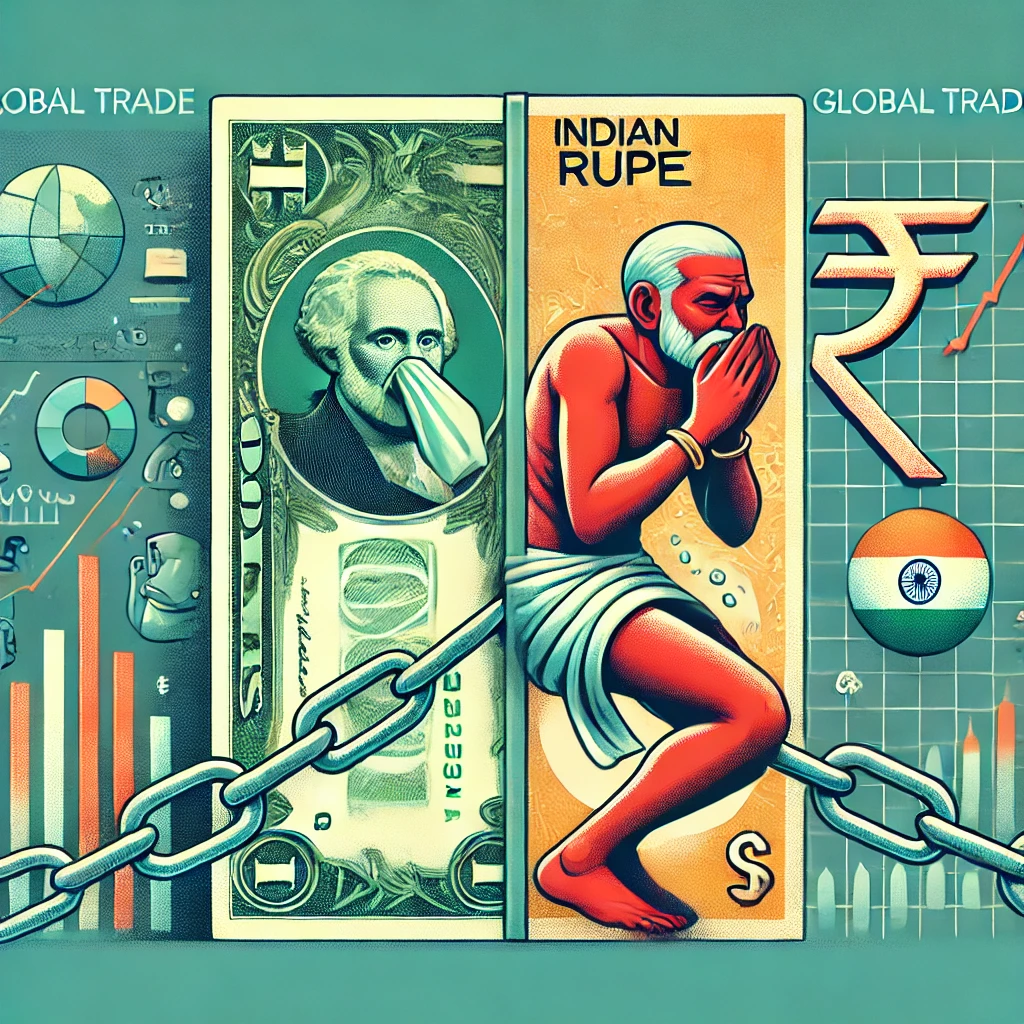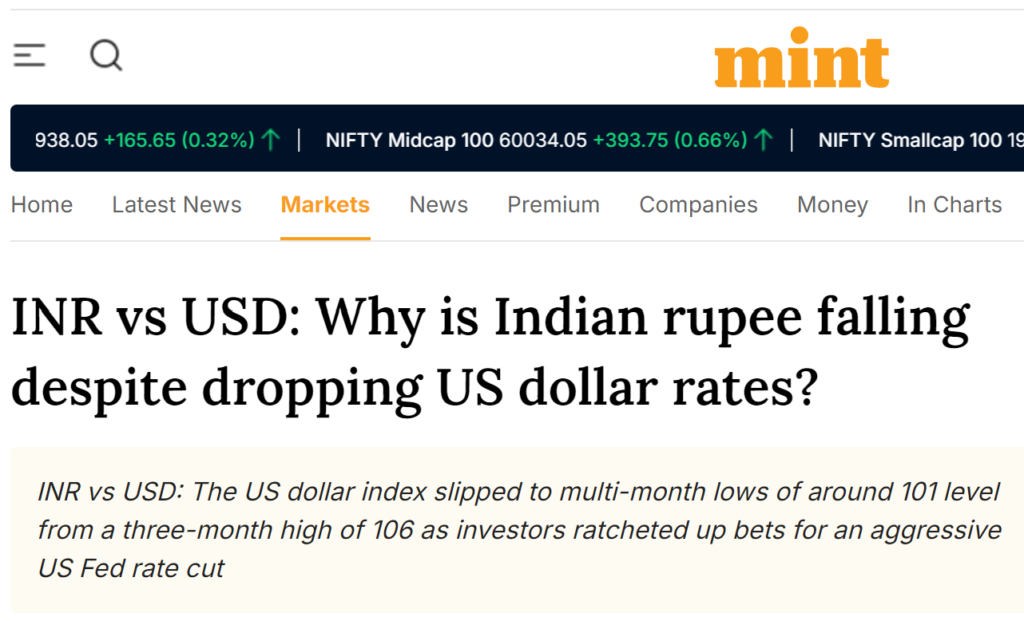Background: The Indian rupee (INR) has been depreciating despite a recent drop in the value of the U.S. dollar (USD). This seemingly counterintuitive movement can be explained by a combination of global economic conditions and domestic factors affecting India’s currency.
Key Economic Drivers:
- Global Economic Conditions: While the USD has weakened, especially as traders anticipate possible Federal Reserve rate cuts, the global economic environment remains volatile. Concerns about a global slowdown, especially in Europe and China, have led to increased uncertainty in the financial markets. In such times, investors tend to seek safer assets, often resulting in capital outflows from emerging markets like India. This contributes to downward pressure on the rupee, as foreign investors sell off Indian assets, converting INR back into foreign currencies.
- Oil Prices and India’s Import Bill: India is a significant importer of crude oil, and fluctuations in global oil prices directly impact the value of the rupee. When oil prices rise, India’s import bill increases, leading to a higher demand for USD to pay for these imports. Despite a recent drop in oil prices, the elevated levels of import expenses over time have weakened the rupee, contributing to its current depreciation.
- Current Account Deficit: India’s current account deficit (CAD) has been another significant factor. A wider deficit means the country imports more than it exports, increasing the demand for foreign currencies like the USD. This imbalance puts additional pressure on the INR. While the weakening USD might offer temporary relief, it has not been enough to offset the structural challenges India faces, such as the CAD and external debt.
- Foreign Investments and Capital Flows: Foreign investors have been cautious about investing in emerging markets, including India, due to concerns about global growth and geopolitical risks. Reduced foreign direct investment (FDI) and portfolio investment into India have limited the inflow of USD into the economy. This has caused a further supply-demand imbalance between INR and USD, contributing to the rupee’s decline.
Impact on the Average Person: For everyday individuals in India, the falling rupee has several economic implications.
- Rising Prices for Essential Goods: A weaker rupee makes imported goods more expensive, especially oil, which drives up fuel prices. This, in turn, increases transportation costs, leading to higher prices for everyday essentials like food and consumer goods. Families may notice a rise in their grocery bills and overall living expenses.
- Higher Inflation: Inflation can increase as businesses face rising costs for imported raw materials, which they often pass on to consumers. This means people are paying more for the same goods and services, squeezing household budgets.
- Increased Borrowing Costs: If inflation rises too much, it can force the Reserve Bank of India (RBI) to hike interest rates to control it. This could lead to higher costs for loans, mortgages, and credit cards, affecting homebuyers and anyone with debt.
- Effect on Savings: For those saving money in Indian banks, higher inflation reduces the real value of their savings. While exports may get a boost, benefitting some sectors of the economy, the majority of people will face increased costs in their day-to-day lives.
In summary, the weakening rupee, despite narrowing India’s current account deficit, raises prices for consumers, reduces the purchasing power of savings, and can lead to more expensive loans. The overall impact on the common individual is higher living costs and potential difficulties in maintaining financial stability.
References:
- Livemint – INR vs USD: Why Indian Rupee is Falling Despite Dropping US Dollar Rates
- Investopedia – Current Account Deficit and Its Economic Impacts
- Reuters – India’s Current Account Deficit Narrowing
- The Economic Times – Impact of Oil Prices on Indian Economy



[…] implications for businesses, investors, and everyday citizens. As discussed in the article “When the Dollar Catches a Cold, the Rupee Sneezes: Why Everyday Indians Should Care”, even minor shifts in the rupee’s value can impact fuel prices, inflation, and the cost of […]